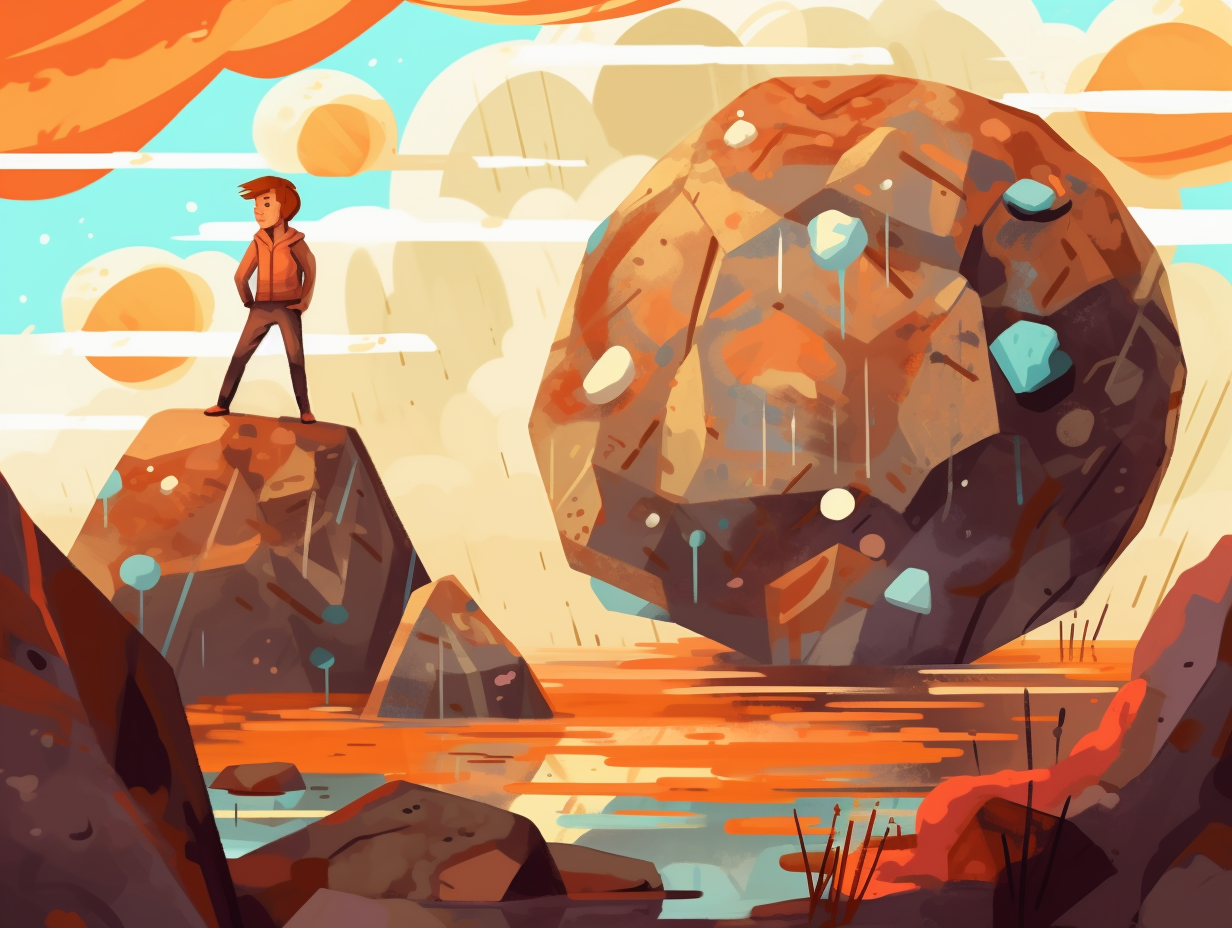Discover the Wonder: Top 13 Amazing and Fun Facts About Marble You Never Knew!

1. Marble's Party Tricks
Marble may not throw wild parties or dance on the bar, but it sure knows how to create a scene at high temperatures: when exposed to extreme heat, it decomposes into gaseous carbon dioxide and quicklime, as well as reacting with acids to produce some crowd-pleasing, bubbly carbon dioxide and sharing a fiery chemistry with fluorine.
Source => cameochemicals.noaa.gov
2. Romans' Bathhouse Extravaganza
Step aside, HGTV: the ancient Romans played the original game of "Extreme Makeover: Bath Edition" with the Baths of Caracalla: Boasting opulence equal to a Kardashian mansion, this lavish bathhouse featured an astounding 6,300 cubic meters of marble and granite lining its walls.
Source => worldhistory.org

Did you know ancient Egyptians were huge fans of limestone? It played a starring role in the construction of their iconic pyramids, temples, and statues. Discover more about the original rock star!
=> Fun Facts about Limestone
3. Taj Mahal's Marble Splurge
Breaking piggy banks and counting pennies: The construction of the Taj Mahal totaled a whopping 41 million rupees, with the marble base and minarets alone costing over 5 million rupees! The main tomb wasn't a bargain either, ringing in at 5.3 million rupees, all meticulously paid for by the Royal Treasury and the Government of the Province of Agra.
Source => wonders-of-the-world.net
4. Mammoth Marble Cake Mania
In a deliciously twisted turn of events that rivals the finest pancake-flipping fiascos, a colossal cake found itself marbled, weighed, and wildly celebrated: On Saudi National Day in 2017, a gargantuan marble cake, tipping the scales at 732 kilograms (1,613.78 lb) was baked in Jeddah by the culinary masters at Betty Crocker, covering an impressive 16 sq m (170 sq ft) of tantalizing territory.
Source => en.wikipedia.org

5. Egyptians' Marble Madness Game
Ancient Egyptians may have coined the phrase "silly as a coiled snake," with their peculiar game of Mehen: in reality, this 4,000-year-old game included small clay marbles found in tombs, which were used as playing pieces on a serpent-shaped board rather than for shooting, as one might expect.
Source => stneotsmuseum.org.uk
6. Michelangelo's Marble Quest
When life gives you lemons, trade them for marble: Carrara, Italy has been producing exquisite marble for nearly 2,000 years and had the great Michelangelo personally handpick his stone slabs from the quarries, even designing roads and supervising the extraction process just to ensure he got the cream of the crop.
Source => metmuseum.org
7. Marble's Cleaning Do's and Don'ts
If you want to make a marble statue cry, give it a bath in vinegar: acidic solutions break down marble, making it important to avoid substances like vinegar for cleaning. Instead, the process of crystallization, which uses acidic solutions and steel wool pads, can create a glossy and durable finish on marble floors by bonding calcium hexafluorosilicate to the surface. However, a statue's tears aren't the only natural enemies of marble: microbial degradation, including bacterial and fungal attacks, have been reported in samples from Milan Cathedral. So, taking proper care of marble is essential to maintaining its beauty and longevity.
Source => en.wikipedia.org
8. Green Marble's Tough Love
Feeling green with envy at the sight of luxurious marble? Brace yourself for some tough love: Green marble, known for its striking appearance, is the hardest marble in the world due to its high serpentine content, making it a popular choice for both indoor and outdoor installations worldwide.
Source => regattaexports.com
9. Marble's Crayola Fashion Show
If Michelangelo had a membership to the Crayola Crew, he'd be hogging all the marble crayons: Marble comes in an array of colors like white, pink, gray, red, yellow, and black! This metamorphic rock, born through a dramatic pressure cooker situation deep within the Earth's crust, transforms limestone into an artist's obsession that graces statues and buildings alike. But watch out, it's got a secret Achilles heel: the lovely stone is prone to acid erosion, leaving its polished surface with heart-wrenching etch marks.
Source => westasd.org

10. Cultured Marble's Sassy Swag
Step aside, 50 Shades of Grey: cultured marble struts in with its own vibrant color spectrum to woo interior design enthusiasts everywhere! As a customizable blend of stone particles and resins, this fabulous material syncs with pigments to create natural-looking hues, molds itself into almost any shape and role, and flaunts a nonporous surface that dismisses sealing and grout lines like a diva tossing aside unwanted paparazzi.
Source => ateammarble.com
11. David's Marble Rebellion
Feeling stony and rebellious, are we? Michelangelo's David wasn't just a chiseled hunk flexing his guns; he was a marble-made "take that!" to the Medici family: Originally part of a series of prophet statues, David became a bold symbol of civil liberty for the Florentine people, standing tall in defiance of their rivals and even bravely enduring two attempts to bring him to his knees.
Source => en.wikipedia.org
12. Marble's Slippery Secrets
Confucius say, "Man who stand on marble floor may slip into deep thoughts": While your mind may glide around freely, it turns out that the slipperiness of marble tiles actually depends on various factors such as the type of marble, finish, environment, and foot traffic! For instance, polished finish tiles turn out to be more slippery than their natural finish counterparts. However, with proper installation, sealing, and regular cleaning, marble tiles can provide an elegant and durable surface that is not overly slippery – ensuring both your home's beauty and safety remain tiptop.
Source => tilesplusmore.com
13. Marble's Cool Under Pressure
If you think marble just sits there like a rock, well, you're in for a hot surprise: This seemingly immovable behemoth is actually quite the heat-averse diva, boasting a dense body and a low thermal expansion coefficient that allows it to glide effortlessly through high-temperature situations, such as sculpting and kitchen countertops.
Source => aqua-calc.com
Related Fun Facts




















